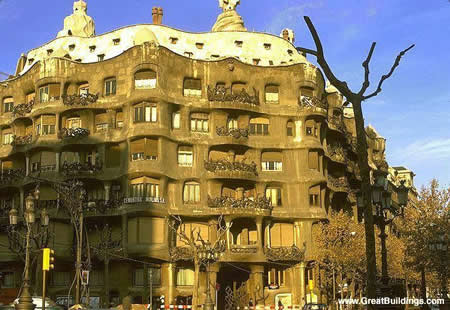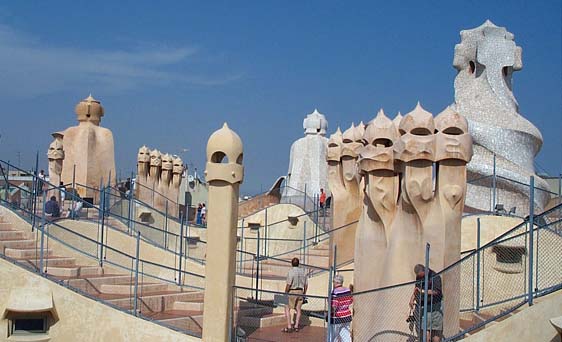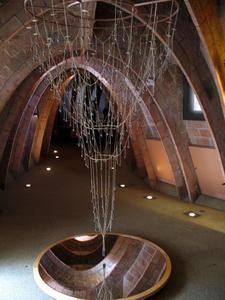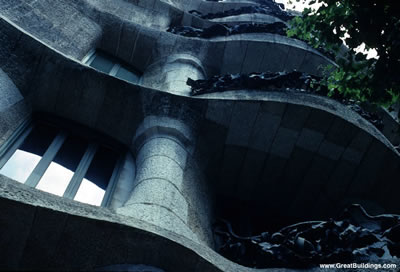












 |
 |
 |
 |
 |
 |
 |
|||||||
 |
 |
||||||||||||
 |
|||||||||||||
 |
|||||||||||||
 |
|||||||||||||
 |
|||||||||||||
 |
Casa Mila (La Pedrera) Expressionistic, fantastic, organic forms in a waving facade and roof line is the Casa Mila. This was the last major project of Antonio Gaudi before he set the remainder of his mind to the Sagrada Familia. The main properties of this structure are the attic and the roof. A series of catinary arches of varying heights sustain the walls of the inner and outer facades of the attic and roof. The Casa Mila was declared a World Heritage Site by UNESCO in 1984.
|
The Roof This piece on this amazing construction is an astounding design. Adorned by an impressive series of eccentric chimney stacks, attention of the observer is directed skyward. To this day, the roof and the attic are open to the public where an exhibition on Gaudi and his works can be located. |
 |
 |
The Attic
Another gem on this structure is the beautiful attic. When one thinks of
an attic they don't perceive it as something that can be beautiful, but
Gaudi has done exactly this. The catenary arches
that Gaudi had designed help sustain the walls of the exterior and interior
facade of the attic at the sides. When looking at this piece it's impossible
to think that someone would want to taken down. The problem was that
the building was more than four meters too high, which caused the building
to exceed the agreed measurement of 4,000 square meters. After much debating
the problem was resolved. They felt that the building had great artistic
value thus it was not subject to the city's authorization. |
Gaudis Vision
The owner of the Casa Mila had seen Gaudis beautiful work on the Casa Batllo
and asked him if he to design a building of rental flats. He constructed
it with smooth, wavelike forms. The structure is based on girders and
Catalan-style vaults. He designed this building so that if it later became
a hotel there would be no problem because the only structural walls bear
on the stairway. Thus the placement of the partitions can be changed or
cast out altogether. The making of the facade was routine. The stone was
sent in from Garraf or Vilafranca where they were cut according to the
scale model which Gaudi had created in the basement of the structure. They
were then fixed in their designated place where Gaudi revised them. |
 |